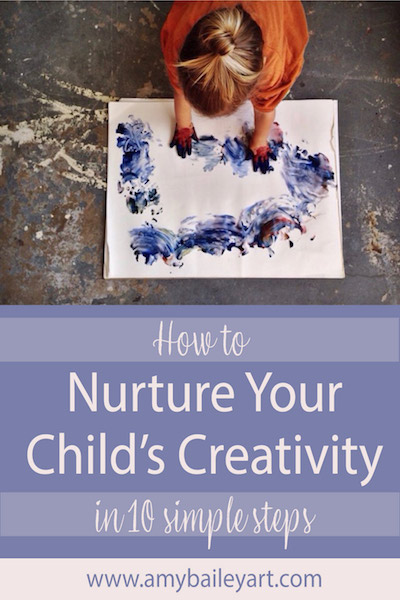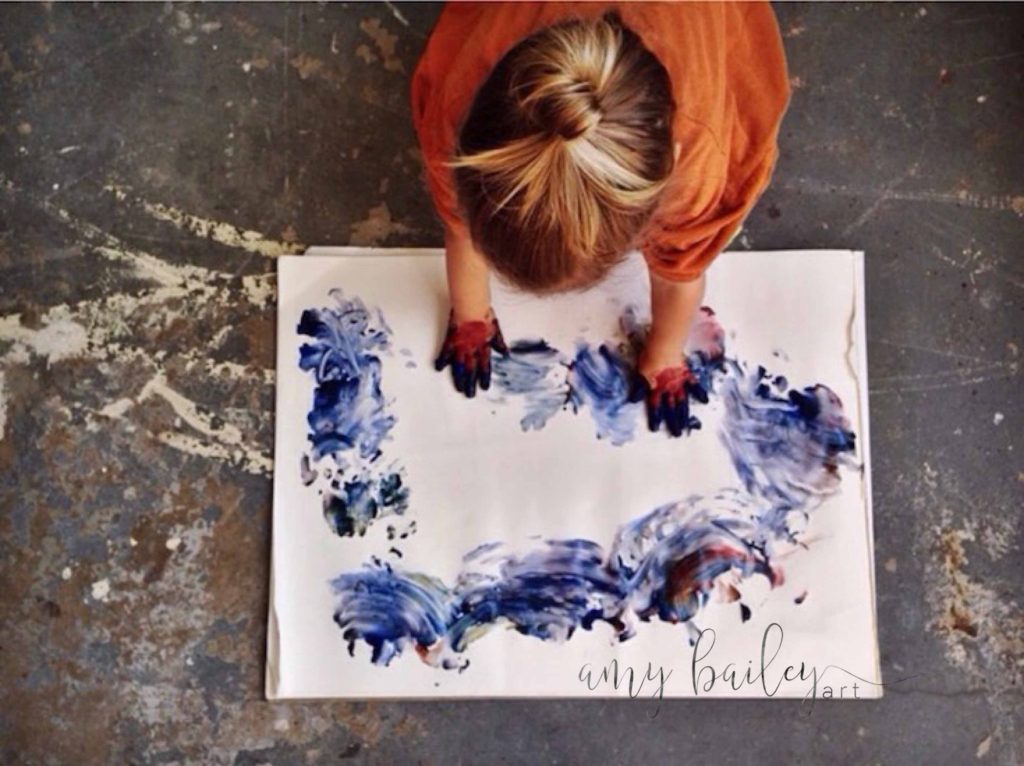
Are you wondering how to encourage your artistic child, nurture your child’s creativity or simply wanting to help grow the valuable skills that art can develop? Here are the things you should do and a few to avoid.
Making art and nurturing your child’s creativity teaches kids so many important life skills!
I won’t do a deep dive here but a few well proven advantages of making art with kids are creative thinkers are curious problem solvers and decision makers. Through making art kids learn to express themselves in healthy ways and to listen and appreciate the voices of others. They also gain valuable concentration, focus, language, spacial reasoning skills, and hand eye coordination. Sign me up, right?!
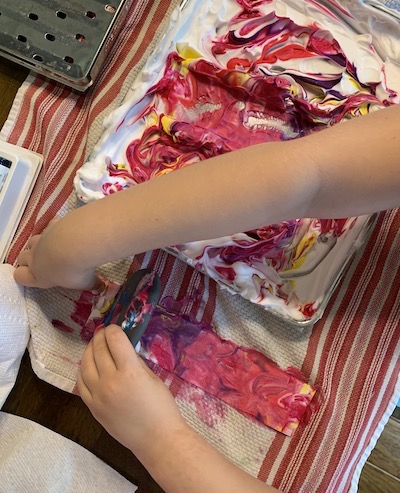
Here are 10 ways to nurture your child’s creativity:
1. Keep Supplies Accessible.
Mentioning this first as it is so important, if not most important. When we moved from our 700 square foot apartment and into a 1200 square foot house I was so excited to set up my own art studio complete with an art space for my child. It took less than a week for me to switch it back to our super simple art space (art caddy, paper storage and the kitchen table) in our common area because she went from creating multiple times a day to only a few minutes every several days. If you are not sure how to simplify your supplies head to this post for the supplies I love to keep accessible for kids.
2. Keep it Simple.
I can’t stress this enough. If I felt that I needed to be sitting down with my child for hours at a time churning out insta-worthy masterpieces, she would NEVER create anything (okay, maybe 3 times a year). Don’t get too fancy. Open ended, exploratory, self guided creation is the best way to nurture your child’s creativity. I recommend 90% of your child’s time with art materials be this.
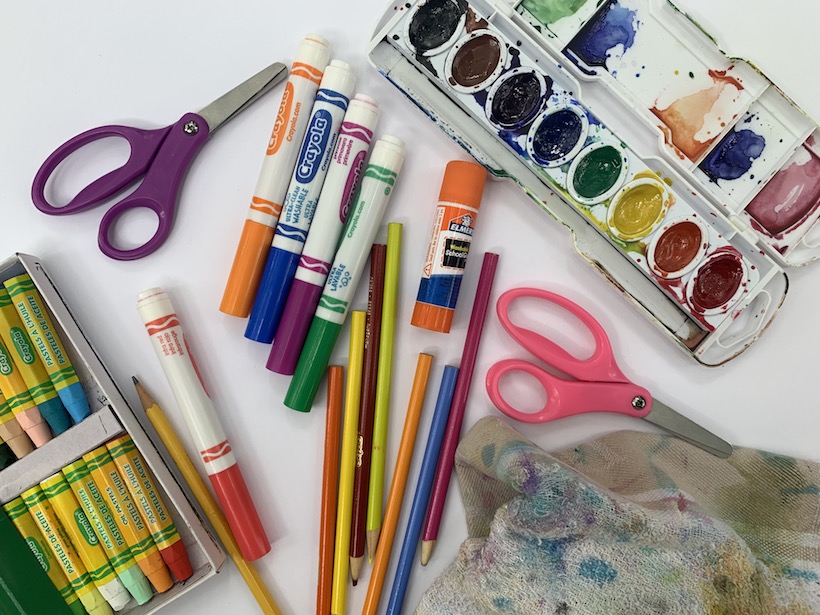
3. Process Over End Product.
This goes right along with keeping it simple. Ensure access to safe supplies and help them when they ask, again open ended creation is most valuable. This was always hard as an art teacher for young kids and it took discipline to not let the knowledge of knowing some parents probably evaluated my teaching based on pretty end products. But, for the love of your child’s creativity rise above it friends!
4. Plan Projects to do Together.
If you can, make it a goal to create a project geared toward their age and ability level on a consistent basis. Pick once a week, every other week, or once a month. Make a plan, put it on the calendar and do it. Read about great artists, do a step by step drawing beside them. I am always adding new projects you can do with your child here. More than art, creativity or fancy supplies, our children need to connect with us. Give yourself this gift one Saturday morning a month or whatever time works best for your family. You will not regret it.
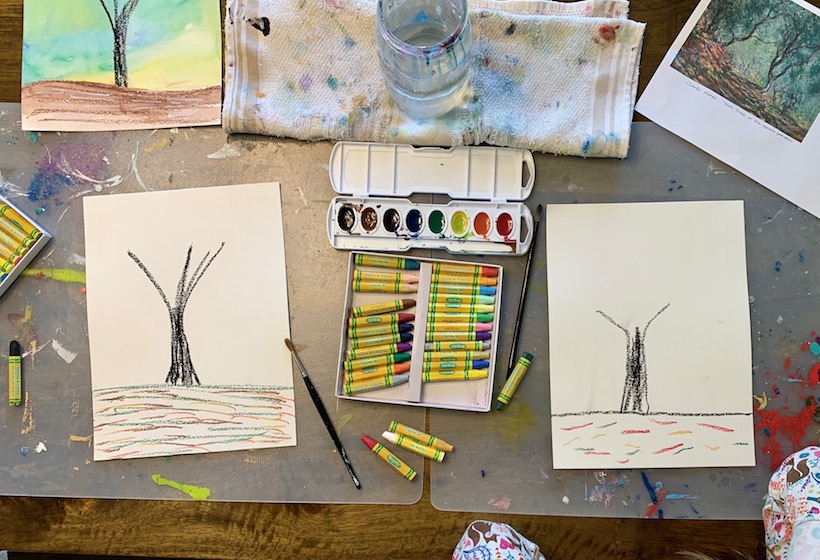
5. Watch Your Words
Do your best not to make objective statements. Instead curiously ask open ended questions. Try to be specific in your questions and praise. Honor their effort over (your or their idea or their idea of) their success. Lovingly and gently redirect all negative self talk and encourage the growth mindset necessary for trying hard things.
6. Be Their Biggest Fan.
In my humble opinion, one of the last things we need in this world is more art critics. Along the lines of #5, I try to focus my praise on their effort. “Wow, that looks like it took a lot of your time and energy. I’m so proud of you for working so hard!” Always ask permission to display it and honor their first response. Try not to force any explanation for a refusal. I have found that children are very intuitive when it comes to false praise. Be as genuine as possible.
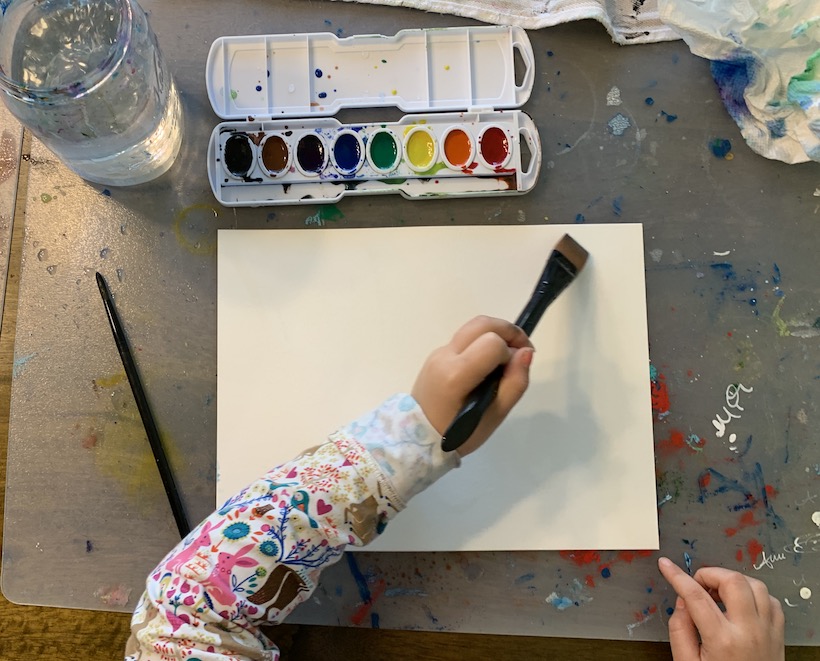
7. Hands Off.
I wanted to all caps this one but also didn’t want you to feel I was shouting at you. But, for real hands off your kids artwork. I know the agonizing feeling. If you could just make one tiny little correction it would set the entire world to right. RESIST. Once you make a mark on their page it becomes a collaboration between you two. It is no longer THEIR work only. Also, interfering robs them from the future feeling of accomplishment that they did it by themselves.
By adding your mark to a child’s work you are telling them that they can’t do it, and it’s too hard for them.
Instead, switch on your cheerleader mode, and encourage the stretching of their brains. I do have several ways to help that encourage and guide instead of interfere. First, I do a step by step demo shoulder to shoulder. Say a child wants to learn to draw an eye. I would draw one small line at a time to draw an eye. I pause between each line so they can make the same line on their paper. Then if they are still having trouble I let them trace over my line and then draw theirs. If they are still discouraged, on a separate sheet of paper I practice draw with them, I use my hand to guide their hand. I use scrap paper for all of these approaches and never touch their work.
8. Teach them to Clean Up.
This both empowers them and takes away one of the main obstacles most parents and care givers have with art making. Make sure each supply has a home and your child knows where that home is. This is another bonus to keeping supplies simple (here’s that list again!). I find it very helpful to have a place for drawing artwork and pieces still “in process”. Start as young as possible and instill it as a habit. Although it is more work on the front end than just cleaning up yourself, you will not regret it in the long run!

9. Honor Your Own Creative Practice and Invite Them in.
This is probably the hardest one for me and I have a whole post about how to do this here. What I have learned in almost 8 years of trying to juggle being a working artist and stay at home mom is that honoring my own practice encourages my child’s creativity more than any other intentional move I make. Children learn through modeling and listen harder to what we do than what we say. They are watching. It can be both encouraging and demoralizing. Take heart. Do it imperfectly and keep showing up. If it’s been a while, just start again. Invite them in. From time to time, pull out a blank sheet or canvas and hand over your brush and see what those little hands do. Let them inspire you.
10. Teach Them to Curiously Observe and Study.
Read good books, read books about artists, watch videos about them, check out art books from the library, go to local museums and galleries. (You can read about talking about famous artists with your kids here). Go for walks and hikes to find beauty, point out interesting shapes or patterns you see, notice storm clouds rolling in, look for the moon, complementary colors in nature or even on billboards, product design color and packaging you love, everything. Art is always all around us. Encourage them to talk about what they see and notice and when they do listen and respond. Here is a post about connecting with nature through art to inspire you.
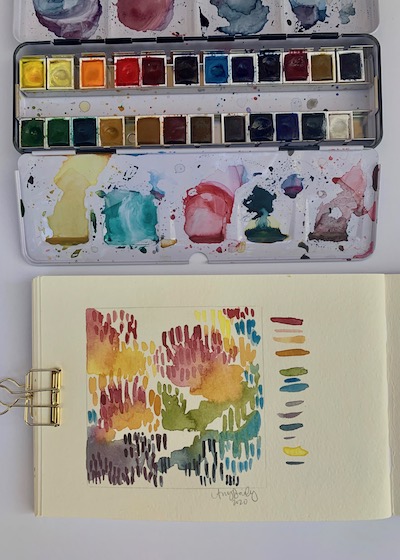
We are all born creative, and it is such a gift, isn’t it?
When you nurture your child’s creativity it will build skills that they can use for a lifetime, no matter their profession. I hope these ideas have encouraged you to keep it light and fun and make it a natural part of your life.
